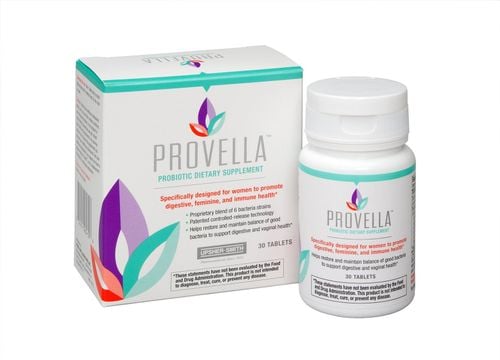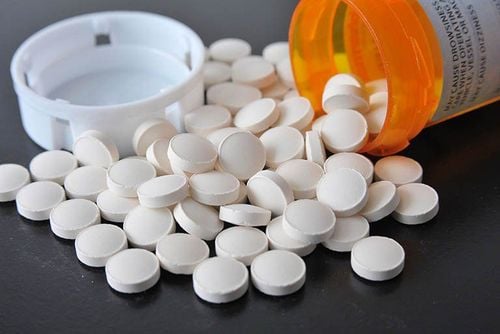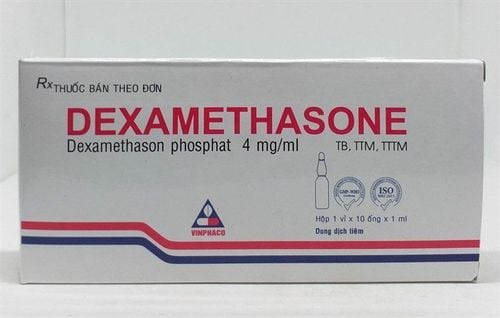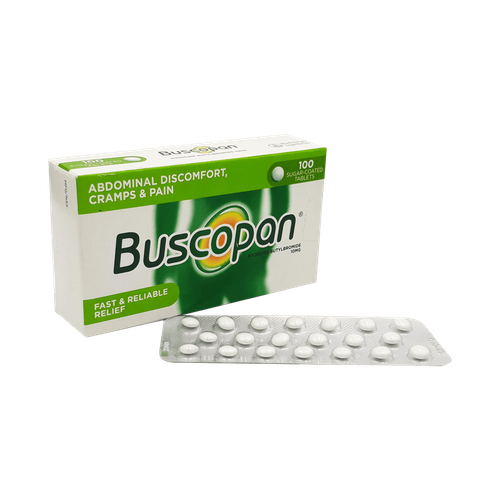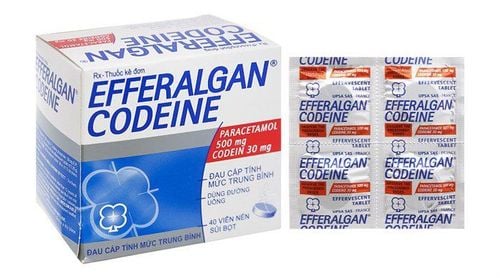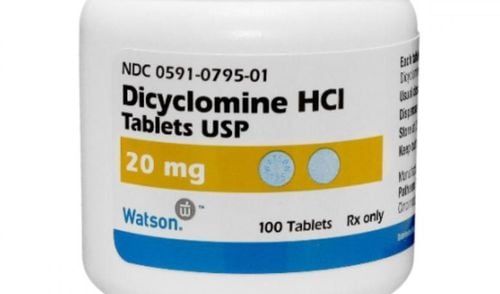This is an automatically translated article.
Atropine is a group of drugs that inhibit the sympathomimetic, acting on the central and peripheral nervous system. Atropin is prepared in many different forms and with different strengths such as oral, injectable, eye drops. Depending on the goal of treatment, there will be a way to use the drug so that it is reasonable.1. What does Atropin do?
Atropine belongs to the group of anti-sympathomimetic drugs, the main ingredient of which is atropine. Atropine has effects on the central and peripheral nervous system, reducing smooth muscle spasms and reducing fluid secretion.Atropin is prepared in the following forms: 0.4mg tablets, injections with different strengths, 1% eye ointment, 1% eye drops.
Atropin has the following effects:
Digestion: Controls stomach ulcers - duodenal ulcer, digestive disorders, acute or chronic diarrhea, irritable bowel syndrome, colitis, pouchitis excess, colic in neonates, Urology: Control of bladder spasms, renal and biliary spasms. Cardiovascular: Used when hypotension in cardiopulmonary resuscitation, bradycardia, after myocardial infarction. In surgery, Atropin is used to prevent cholinergic effects on the heart (arrhythmia, bradycardia) Neurological: Treatment of extrapyramidal symptoms, drug-induced Parkinson's disease with manifestations such as tremor, rigidity, sweating sweat, excessive salivation. For idiopathic Parkinson's, the drug is not used because of its poor efficacy and cognitive effects. Brain tumorigenesis: Managing mood swings. Eyes: Treatment of uveitis, blepharospasm, pupil dilation. In addition, Atropin is also used as a pre-anesthetic drug; in surgery helps to reduce secretions of respiratory mucus and saliva; antidote for poisoning by pesticides, fungi; motion sickness prevention - car.
If Atropine is combined with other vasoconstrictors or antihistamines, it can help treat some symptoms of colds and coughs. In combination with neostigmine, it is used to detoxify or overdose on muscle relaxants.
2. Dosage and how to use Atropin
2.1 Dosage and administration of Atropin for adults Depending on the purpose of treatment, dosage and usage of Atropin for adults are as follows:
Bradycardia: Intravenous injection 0.4 - 1mg every 1-2 hours, the maximum dose can be up to 2mg in special cases. Atrioventricular block: Intravenous, subcutaneous or intramuscular injection 0.4 - 1mg and can be increased depending on the doctor's prescription. Neurotoxicity or organophosphate poisoning: Intramuscular injection of Atropin 0.8mg. Within 30 minutes if there is no effect or symptoms of poisoning such as nausea, vomiting, diarrhea, pupil constriction, eye twitching, tongue twitching, pulmonary edema, salivation, bronchial fluid, sweating In excess, 2 mg intramuscularly every hour. In severe cases, the injection dose can be up to 2mg and injected 2-3 times, the total dose is from 4-6mg). Gastrointestinal ulcers, head trauma, anesthesia or anesthesia, poisoning with cholinesterase inhibitors: Intravenous, subcutaneous or intramuscular injection Atropin 0.4 - 0.6mg, in some cases especially the dose can be increased. Eyelid paralysis, mydriasis in refractive measurement: 40-60 minutes before measuring, drop 1-2 drops of Atropin 1% into the conjunctiva, in case of necessity, it can be instilled twice. Uveitis, iritis: Instill 1-2 drops of Atropin 1% into the eyes, the maximum dose is 4 times/day. Irritable bowel syndrome, diverticulosis, non-ulcer dyspepsia: take Atropin from 0.6 - 1.2mg before bed, use only 1 dose. 2.2 Dosage and administration of Atropin in children Depending on the treatment purpose, dosage and use of Atropin in children are as follows:
Bradycardia: Intravenous starting dose 0, 02mg/kg/time, every 5 minutes re-injected, the maximum dose is 0.5mg. Organophosphorus poisoning: Intravenous or intramuscular injection starting dose from 0.05 - 0.1 mg/kg every 5 - 10 minutes until no longer toxic symptoms. Anesthesia: Inject 30-60 minutes before anesthesia, subcutaneously or intravenously. Dosage of Atropin depends on the weight of the child such as 0.1 mg for children under 3 kg, 0.2 mg for children from 7 to 9 kg, 0.3 mg for children from 12 to 16 kg, 0.4 - 0, 6mg for children over 20kg. Mydriasis and mydriasis in refraction: 1-3 days before measuring, instill 1 drop of Atropin 1% in each eye, 2 times a day. Uveitis, iritis: Instill 1 drop of Atropin 1% into each eye, up to 3 times a day. Overdose of Atropin can cause symptoms such as nausea, vomiting, headache, dizziness, not alertness, drowsiness, dry nose, mouth and throat, blurred vision, dilated pupils, increased breathing rate, increased body temperature, dry skin, confusion, anxiety, weak pulse, seizures, irregular heartbeat. At that time, the patient needs emergency treatment.
In addition, if you see signs of an allergy such as swelling of the face, tongue, throat, difficulty breathing, rash after taking Atropin, the patient should contact a doctor or go to a medical facility immediately.
3. Effects of Atropine
Atropin can cause some side effects with the frequency of occurrence as follows:
Common: Difficulty swallowing, difficulty speaking, dry mouth, thirst, fever, anaphylaxis, decreased bronchial secretions, copper dilatation Death, glaucoma, eye incompetence and photophobia, transient bradycardia and subsequent rapid increase, arrhythmia and palpitations, paranoia, confusion, excitability. Uncommon: Difficulty urinating, dry skin, flushed skin, vomiting, constipation due to decreased tone and motility of the gastrointestinal tract, dizziness.
4. Some notes when using Atropin
Atropin should not be used in people with severe hypersensitivity to the ingredients of the drug, people with urinary retention due to prostate enlargement, pyloric stenosis, paralytic ileus, severe ulcerative colitis, myasthenia gravis, glaucoma dp closed-angle or narrow-angle glaucoma, tachycardia, thyrotoxicosis, or high fever in children. The use of Atropin in children should be cautious, especially it should be noted that Atropin eye drops should not be used in children under 3 months of age. The elderly, people with Down syndrome, have fever, diarrhea, myasthenia gravis, heart surgery, heart failure, acute myocardial infarction, people with high blood pressure, liver failure, kidney failure. When using Atropin eye drops in children, it should be noted that the drug can cause systemic toxicity. When using Atropin 0.5% to instill, use a soft cotton pad to gently press the inner corner of the eye for a few minutes so that the medicine does not run down the mouth and cause poisoning. If Atropin is used for a long time, it can cause blood swelling, inflammation, conjunctival edema, and local irritation. For women who are pregnant, caution should be exercised when taking Atropin, especially in the last months of pregnancy, because the drug can cross the placenta and affect the fetus. Women who are breastfeeding should also avoid long-term use of the drug because it can pass through breast milk and affect the infant. It is necessary to limit driving a vehicle or operating machinery while taking Atropine because it can cause blurred vision or drowsiness. Above is important information about the drug Atropin. You need to read the instructions carefully when using the drug for the best results.
Please dial HOTLINE for more information or register for an appointment HERE. Download MyVinmec app to make appointments faster and to manage your bookings easily.




